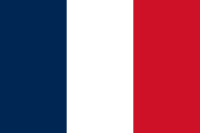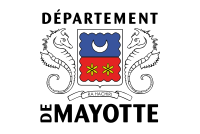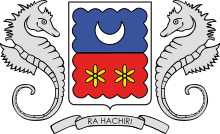
In the administrative divisions of France, the department is one of the three levels of government under the national level, between the administrative regions and the communes. Ninety-six departments are in metropolitan France, with an additional five constituting overseas departments, which are also classified as overseas regions. Departments are further subdivided into 333 arrondissements and 2,054 cantons. These last two levels of government have no political autonomy, instead serving as the administrative basis for the local organisation of police, fire departments as well as, in certain cases, elections.

France is divided into eighteen administrative regions, of which thirteen are located in metropolitan France, while the other five are overseas regions.
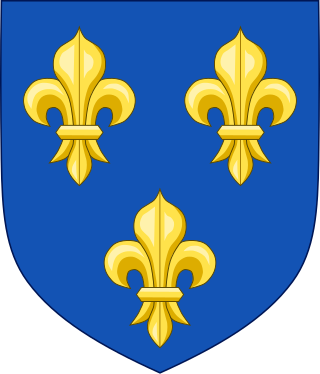
The fleur-de-lis, also spelled fleur-de-lys, is a common heraldic charge in the shape of a lily. Most notably, the fleur-de-lis is depicted on the traditional coat of arms of France that was used from the High Middle Ages until the French Revolution in 1792, and then again in brief periods in the 19th century. This design still represents France and the House of Bourbon in the form of marshalling in the arms of Spain, Quebec and Canada, for example.

The national flag of Poland consists of two horizontal stripes of equal width, the upper one white and the lower one red. The two colours are defined in the Polish constitution as the national colours. A variant of the flag with the national coat of arms in the middle of the white fess is legally reserved for official use abroad and at sea. A similar flag with the addition of a white eagle is used as the naval ensign of Poland.

A saltire, also called Saint Andrew's Cross or the crux decussata, is a heraldic symbol in the form of a diagonal cross. The word comes from the Middle French sautoir, Medieval Latin saltatoria ("stirrup").

The coat of arms of the Philippines features the eight-rayed sun of the Philippines with each ray representing the eight provinces which were placed under martial law by Governor-General Ramón Blanco Sr. during the Philippine Revolution, and the three five-pointed stars representing the three major island groups of Luzon, the Visayas, and Mindanao.
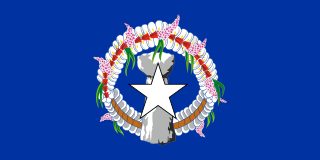
The flag of the Commonwealth of the Northern Mariana Islands was adopted in July 1985 by the Second Northern Marianas Constitution. The NMI flag was originally designed during the year 1985. Later during that year, they finalized the draft of the flag in the last CNMI constitutional convention. This was the most symbolic moment of the annexation of the CNMI.
A territorial collectivity, or territorial authority, in many francophone countries, is a legal entity governed by public law that exercises within its territory certain powers devolved to it by the State as part of a decentralization process. In France, it also refers to a chartered administrative division of France with recognized governing authority. It is the generic name for any territory with an elective form of local government and local regulatory authority. The nature of a French territorial collectivity is set forth in Article 72 of the Constitution of France (1958), which provides for local autonomy within limits prescribed by law.
Maore Comorian, or Shimaore, is one of the two indigenous languages spoken in the French-ruled Comorian islands of Mayotte; Shimaore being a dialect of the Comorian language, while ShiBushi is an unrelated Malayo-Polynesian language originally from Madagascar. Historically, Shimaore- and ShiBushi-speaking villages on Mayotte have been clearly identified, but Shimaore tends to be the de facto indigenous lingua franca in everyday life, because of the larger Shimaore-speaking population. Only Shimaore is represented on the local television news program by Mayotte La Première. The 2002 census references 80,140 speakers of Shimaore in Mayotte itself, to which one would have to add people living outside the island, mostly in metropolitan France. There are also 20,000 speakers of Comorian in Madagascar, of which 3,000 are Shimaore speakers.
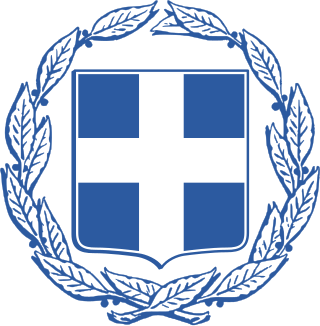
The coat of arms of Greece or national seal of Greece comprises a white Greek cross on a blue escutcheon, surrounded by two laurel branches. It has been in use in its current form since 1975. Prior to the adoption of the current coat of arms, Greece used a number of different designs, some of which were not heraldic; the first heraldic design was introduced in 1832 and its main element, the blue shield with the white cross, has been the base for all other national coats of arms since then. The design is a heraldic representation of the Greek national flag adopted in 1822, which featured a white cross on a blue field.

The coat of arms of Alabama depicts a shield upon which is carried the symbols of the five states which have at various times held sovereignty over a part or the whole of what is now Alabama. These are the ancient coat of arms of France, the ancient coat of arms of Crown of Castile for Spain, the modern Union Jack of the United Kingdom and the battle flag of the Confederate States. On an escutcheon of pretence is borne the shield of the United States. The crest of the coat represents a ship which brought the French colonists who established the first permanent European settlements in the territory. Below is the state motto: Audemus jura nostra defendere, meaning "We dare defend our rights."

The Departmental Council of Mayotte is the local authority overseeing the Department of Mayotte. The legislative branch is composed of the council itself acting as a deliberative assembly, while the executive is composed of the President of the Council and their Vice-Presidents. The members of the council, known as Departmental Councillors and 26 in number, are directly elected for a 6-year term in single seat constituencies; half of the seats are renewed every 3 years. It also exercises the responsibilities of a regional council.

The flag of Pittsburgh is a triband flag featuring vertical bands of black and gold and Pittsburgh's coat of arms in the center.
Bushi or Kibosy is a dialect of Malagasy spoken in the Indian Ocean island of Mayotte. Malagasy dialects most closely related to Bushi are spoken in northwestern Madagascar in the area of Antsiranana (Diego-Suarez) and Mahajanga (Majunga), which is also the closest point in Madagascar to Mayotte. Kibosy and Majunga together are considered one of the Malagasy languages by Glottolog.

French heraldry is the use of heraldic symbols in France. Although it had a considerable history, existing from the 12th century, such formality has largely died out in France, as far as regulated personal heraldry is concerned. Civic heraldry on the other hand remains a visible part of daily life.
This gallery shows the coat of arms of each of the Dependent territories in the list of countries.

The flag and coat of arms of the Sovereign Military Order of Malta, or the Jerusalem flag, display a white cross on a red field, ultimately derived from the design worn by the Knights Hospitaller during the Crusades.

The Seal of Manila is composed of the city's modern coat-of-arms, with colors mirroring those of the Philippine National Flag. It is a modified form of the city's historical arms bestowed in the 16th century.
